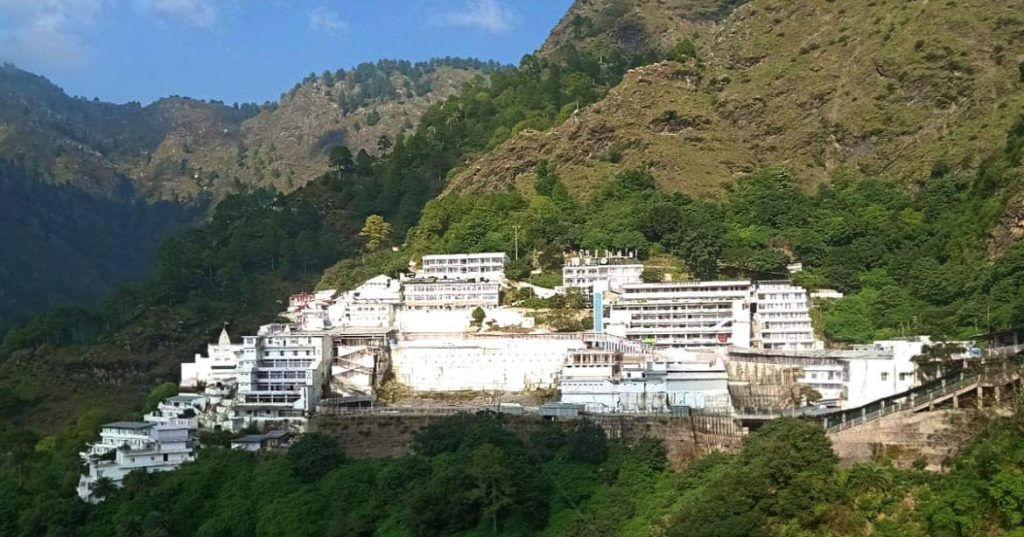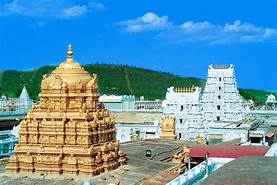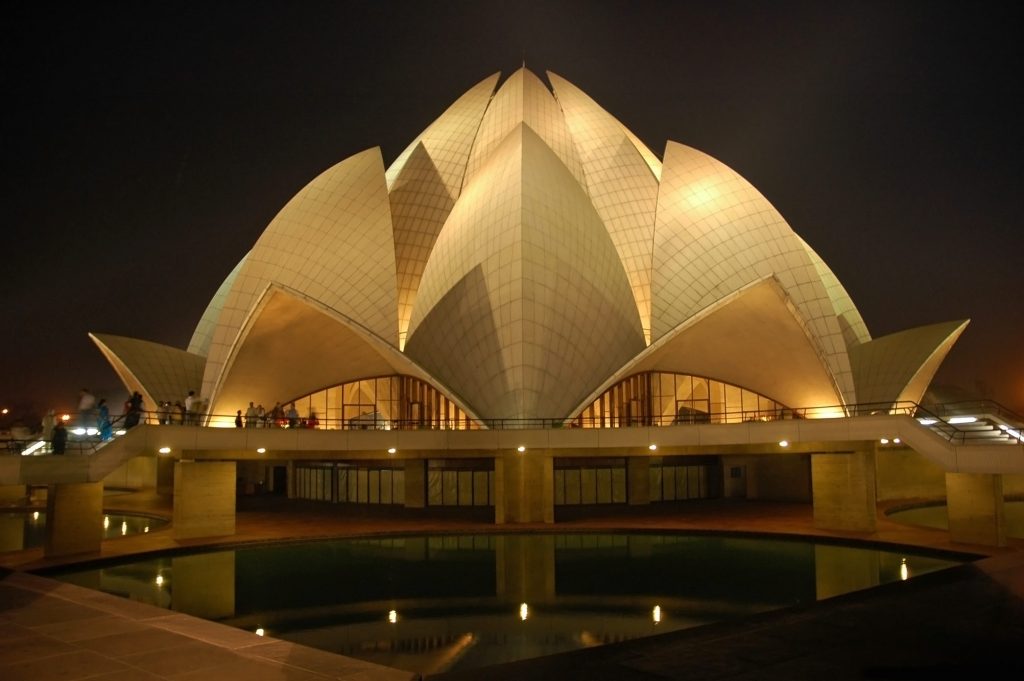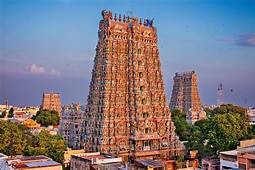Islam, Buddhism, Christianity, Sikhism, Jainism, and many tribal and folk beliefs are among the nine recognised religions of the country.
According to the latest recent census, the majority of people in India profess one of two faiths: Hinduism (80%), and Islam (14%). However, the mix of faiths varies greatly by place.
For example, the western state of Maharashtra, where Mumbai is located, has a big concentration of Buddhists, but northerly Punjab has the majority of India’s Sikh population.
Extensive and magnificent temples may be found throughout the country, reflecting the country’s religious variety; some date back centuries, while others are recent architectural wonders.
When it comes to temples, here are eight of the most gorgeous. If you visit India, you must visit the Vaishno Devi Temple.
Vaishno Devi Temple,

located around 5,300 feet above sea level in northern India, attracts approximately 8 million people each year to the Holy Cave of the Mother.
The most usual way to get there is on foot through a 12-kilometer trail, which takes around six hours for a decently fit person. Because it’s primarily uphill, there are a few places to eat, rest, and stay overnight along the way.

The old, the sick, and the injured can request that they be carried up the hill on a palanquin. Alternatively, the voyage can be made on horseback or even by helicopter.
Visitors are surrounded by lush trees and mountains once they arrive. The scenery will either gleam with dewy green hues or sparkle under a spotlight. Depending on the time of year, there may be a white blanket of snow.

A cable car connects the main temple to Bhairav Baba, a sacred temple about 1.5 kilometres up the slope.
The Golden Gurdwara (Golden Temple)

The Golden Temple, a well-known Sikh temple in northern India, takes its name from its gilded front, which is supposed to be coated in pure gold leaf.
The 16th-century temple is considered the Sikh religion’s principal place of devotion. As a result, worshippers typically make the journey at least once in their lifetime.

It’s nothing less than a work of art. Inside, visitors can find vibrant murals and exquisite tiled mosaics, all of which are reminiscent of Mughal-style architecture.

Another reason the temple is well-known is for its Langar, a type of food market. Anyone in need is fed in a communal kitchen. The langar is thought to serve more than 100,000 people every day and has been dubbed the world’s largest “free kitchen.”
Tirumala Tirupati Balaji Temple

Tirumala Tirupati Balaji Temple, located in the forested Tirumala Hills in southeastern India, receives around 40 million visits per year. The Dravidian-style Hindu temple is thought to be from the fourth century, while the exact era is uncertain.
The imposing architecture is one of the numerous lures for visitors and believers alike; imagine an outer wall, an inner wall, a 1.5-acre pond, and several gold and white temple towers around the circumference.
Many pilgrims shave their heads at the temple, which is thought to increase their humility.

For Because this is one of India’s most visited holy sites, it’s recommended to reserve tickets online.
Lotus Temple

Another modern marvel is the Lotus Temple, which receives over 10,000 visitors every day.
The temple, which was built in 1986, is one of seven major Bahá’ Houses of Worship around the world.

Fariborz Sahba, an Iranian-American architect, built the glittering white monument, which includes 27 marble panels that bend to resemble the shape of a flowering lotus – a symbol of divinity and purity.
According to Bahá’ teachings, the number nine is associated with unity, hence the temple includes nine sides as well as nine tranquil ponds.

Meenakshi Temple
The encounter in the first-century Meenakshi Temple in southeastern India , begins with an awe-inspiring entrance. Four gigantic gopuras (towers) loom above, embellished with hundreds, if not thousands, of colourful and elaborate sculptures of deities, animals, and demons.
The 15-acre walled complex feels like a maze once inside, thanks to a series of concentric enclosures, pillared pathways, and bustling markets.

The Thousand Pillared Hall, which has been transformed into a history and art museum with hundreds of stone sculptures, is a highlight for visitors.
However, be prepared for a large crowd. This is another well-known pilgrimage location, with an estimated 25,000 visits every day.




